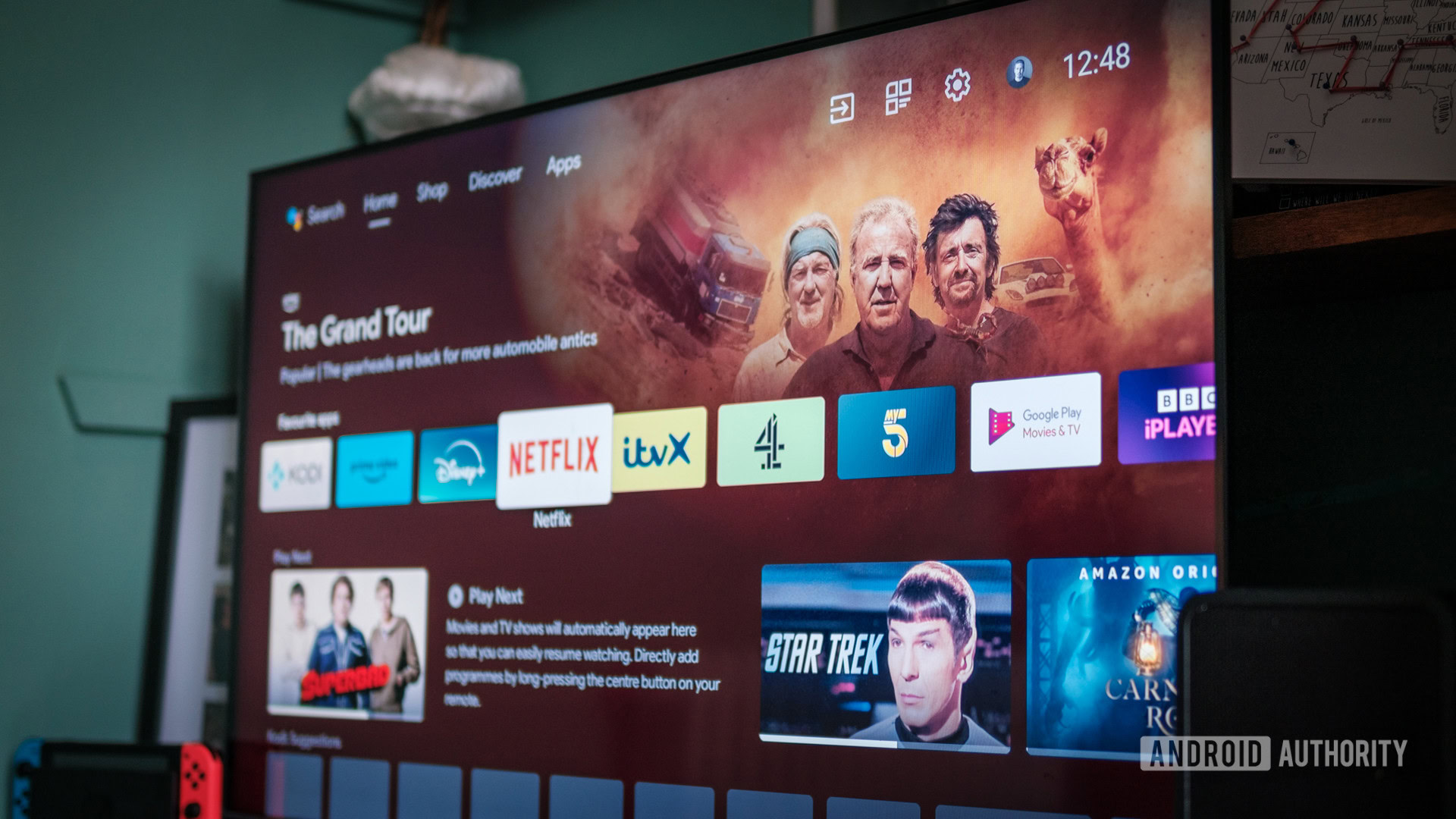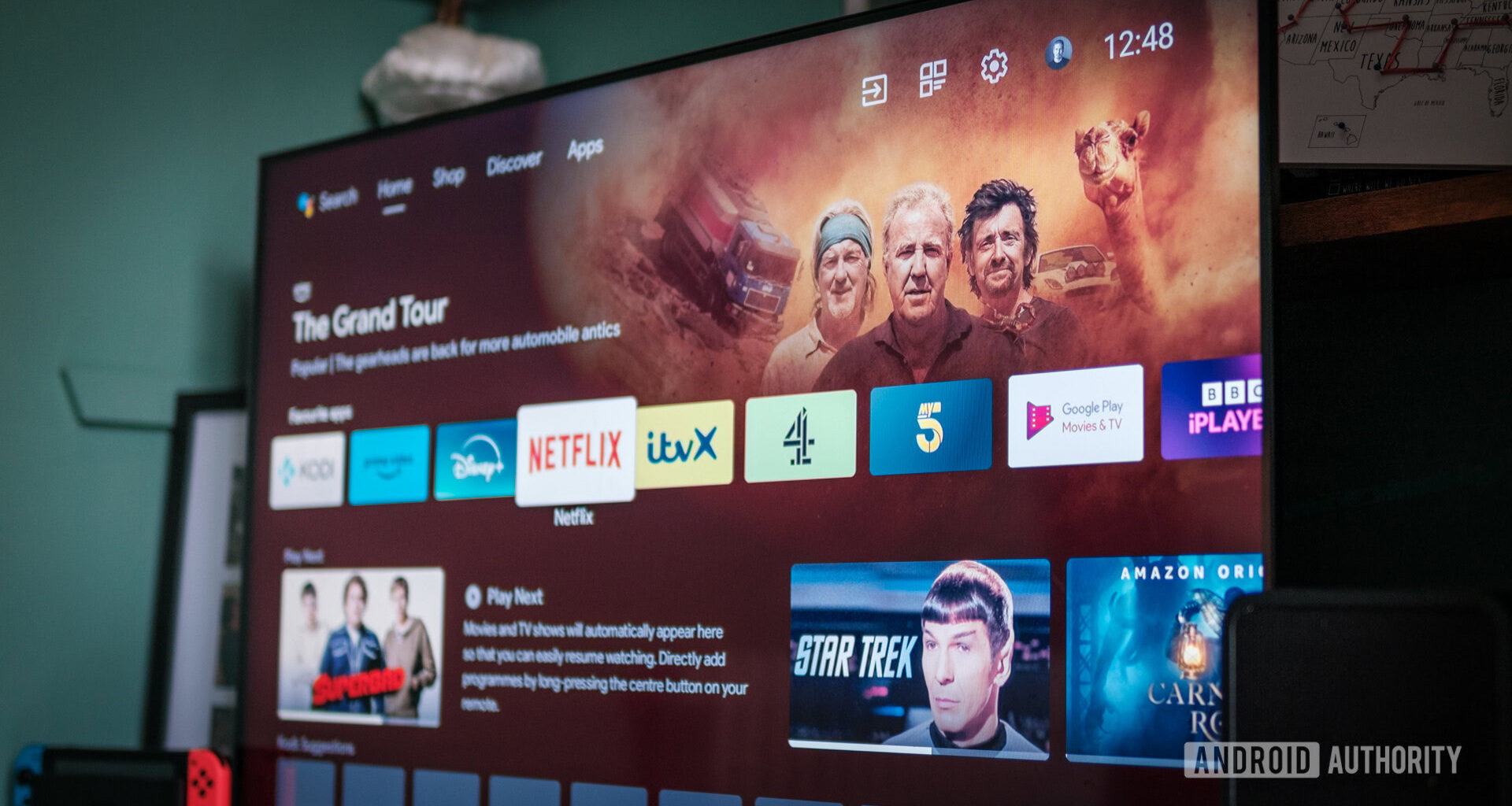
Robert Triggs / Android Authority
For years and years, Apple fans could hold it over Android users’ heads that their platform was the place to get regular, reliable system updates, keeping their devices operating at their best with all the latest new features. That’s arguably still true when we’re looking at certain Android devices, but the situation has gotten a whole lot better, and if you’re rocking a mainstream handset like a Pixel or a Galaxy, you’ve largely got nothing to worry about when it comes to updates.
And that’s great. For phones.
Android’s ambitions don’t begin and end with portable hardware, though, and for over a decade now we’ve been able to turn to Android TV as a platform for feeding our entertainment needs. Whether you’ve got a TV with Android TV baked in, or you’re adding it on through an external stick or box, the OS has offered not just a convenient way to access our favorite streaming services, but also stuff like smart home controls — and even games, in a pinch.
In 2025, shoppers know what to expect from Android updates on phones. But with Android TV, it’s anyone’s guess.
But while updates have become nice and predictable on Android phones, the situation could not be any more different on Android TV — and that includes devices running the modern Google TV interface, as well. On Android TV, access to system updates is still the Wild West, and the consequences of this are being felt right now by owners of Sony TVs.
Google’s latest major platform release, Android TV 14, has its one-year birthday coming up next month. But despite being around so long, many users are still running old software. And that’s exactly why it felt like such big news when we saw Sony TVs receiving their Android TV 14 updates earlier this week.

Ryan Haines / Android Authority
If you saw our coverage at the time, you already know what a mess that’s turned out to be. While the company is indeed updating some of its sets, it’s incredibly opaque just which models are due these updates, and while it initially looked like Sony might be targeting hardware based on the specific silicon they’re running, user reports show the actual distribution is far less predictable. Many are still stuck on older Android TV releases, and even if you go digging through Sony’s support pages looking for firmware downloads you can manually install, we’re noticing that Android TV 14 updates aren’t necessarily available yet for hardware that should be getting them.
We don’t mean to pile on Sony here (although the numerous comments we received about updates bricking TVs certainly gives us pause), and while this recent incident doesn’t leave the company looking great, Android TV’s update problem is far from specific to this one manufacturer. This is endemic across the platform.
Don’t want to miss the best from Android Authority?
Buy an Android phone today, and you know what to expect in terms of updates: You’re going to get so many years of major platform releases, and so many years of security patches. Spend just as much money on a new TV, though, and you’re probably going to be completely in the dark as to what level of software support you can hope to expect. Granted, Android TV releases come out with less frequency than mainstream Android, but it’s like manufacturers aren’t even attempting to set user expectations here, largely just ignoring the question altogether.
That’s all the more frustrating when you look at how long we keep TVs around. With phones, we’re at the point now where software support arguably exceeds hardware lifespan in most cases; if you’re not eventually just breaking your phone after a few years, you’re trading it in for a newer model. But with TVs, many of us are happy to keep viewing the same screen for five years or more, easily, and there’s much less pressure to be chasing the hot new model every year.
So why is the situation not reversed? Why are the big, conspicuous devices that stare at us from their perch on the wall for year after year not the ones where long-term support is the priority?
We keep TVs around for years, and the lack of clear messaging surrounding update expectations is nothing short of maddening.
Honestly, part of that different approach makes sense. What we need from Android on TVs is vastly different from what we’re looking to get out of it on phones, and priorities like security, and access to new communication features just don’t impact TVs in nearly the same way. But that apologist take also doesn’t do anything to forgive the needlessly confusing messaging (or lack thereof) surround the availability of updates — at least let users know what to expect.
If Google wants Android TV and Google TV to be taken as seriously as its mobile platform, it needs to lead the way with communication about updates, and see that manufacturers follow. But right now, shoppers are basically going in blind. This is the farthest thing from a problem that can’t be solved, but all the companies involved are going to have to decide it’s one worth solving.
Thank you for being part of our community. Read our Comment Policy before posting.

